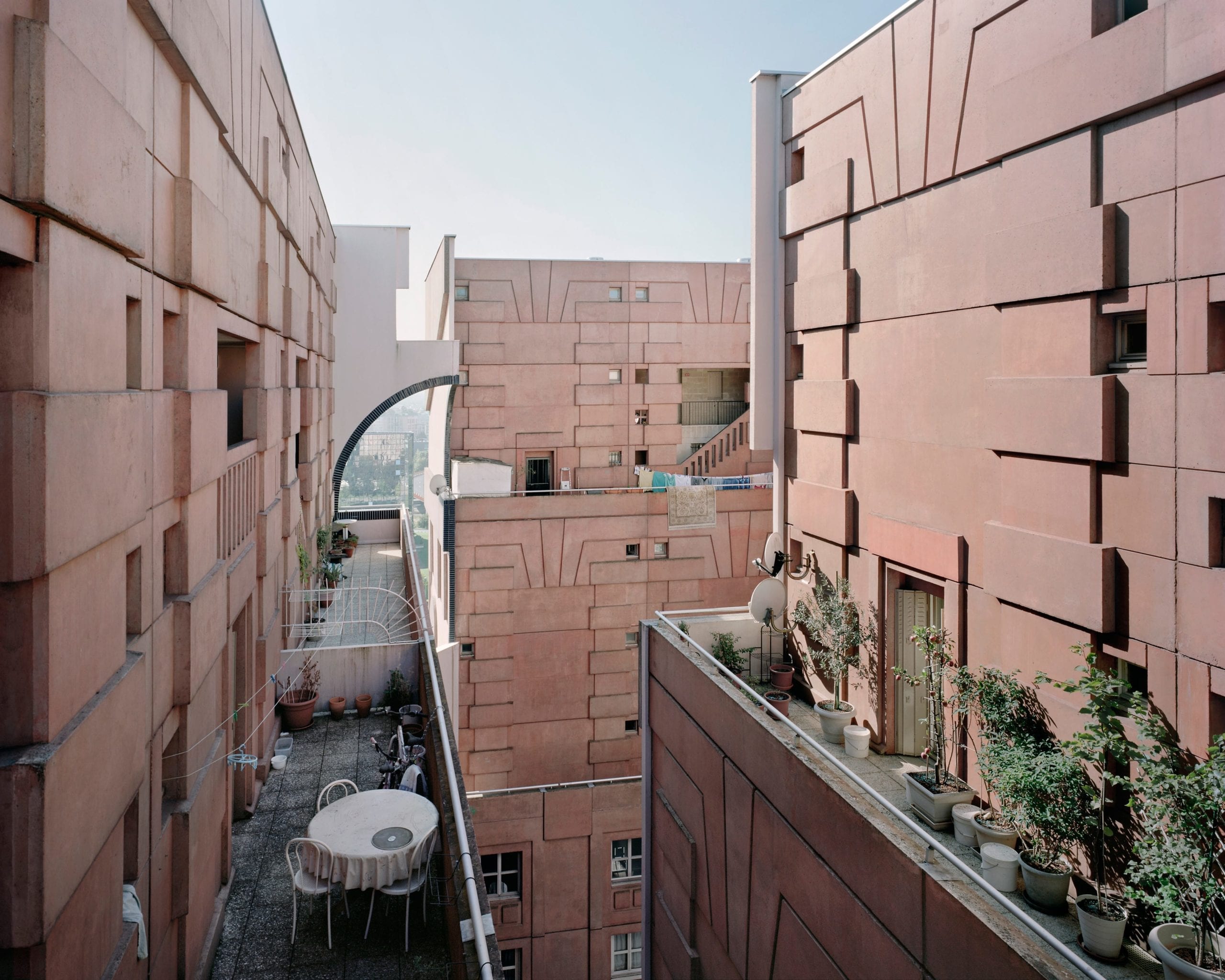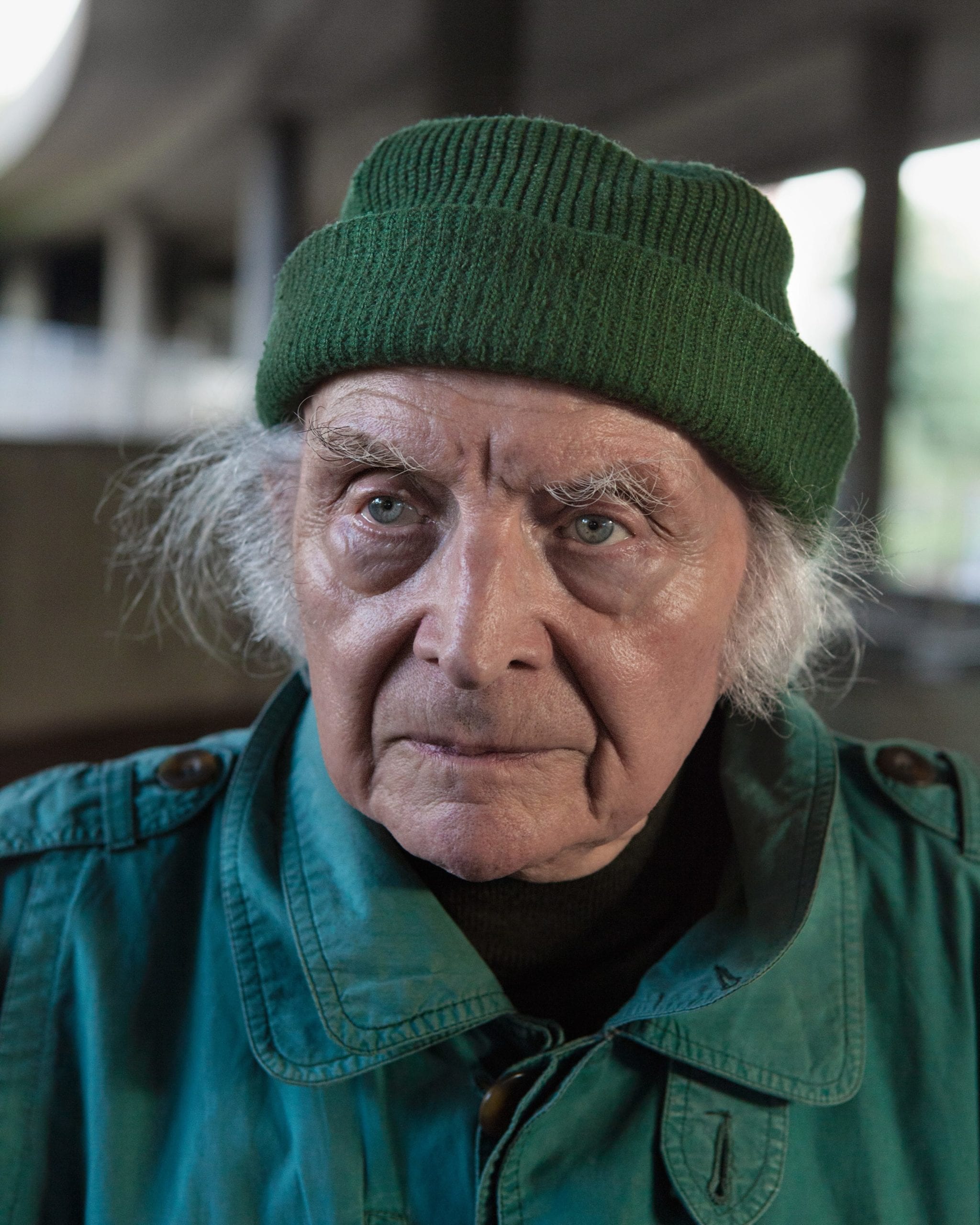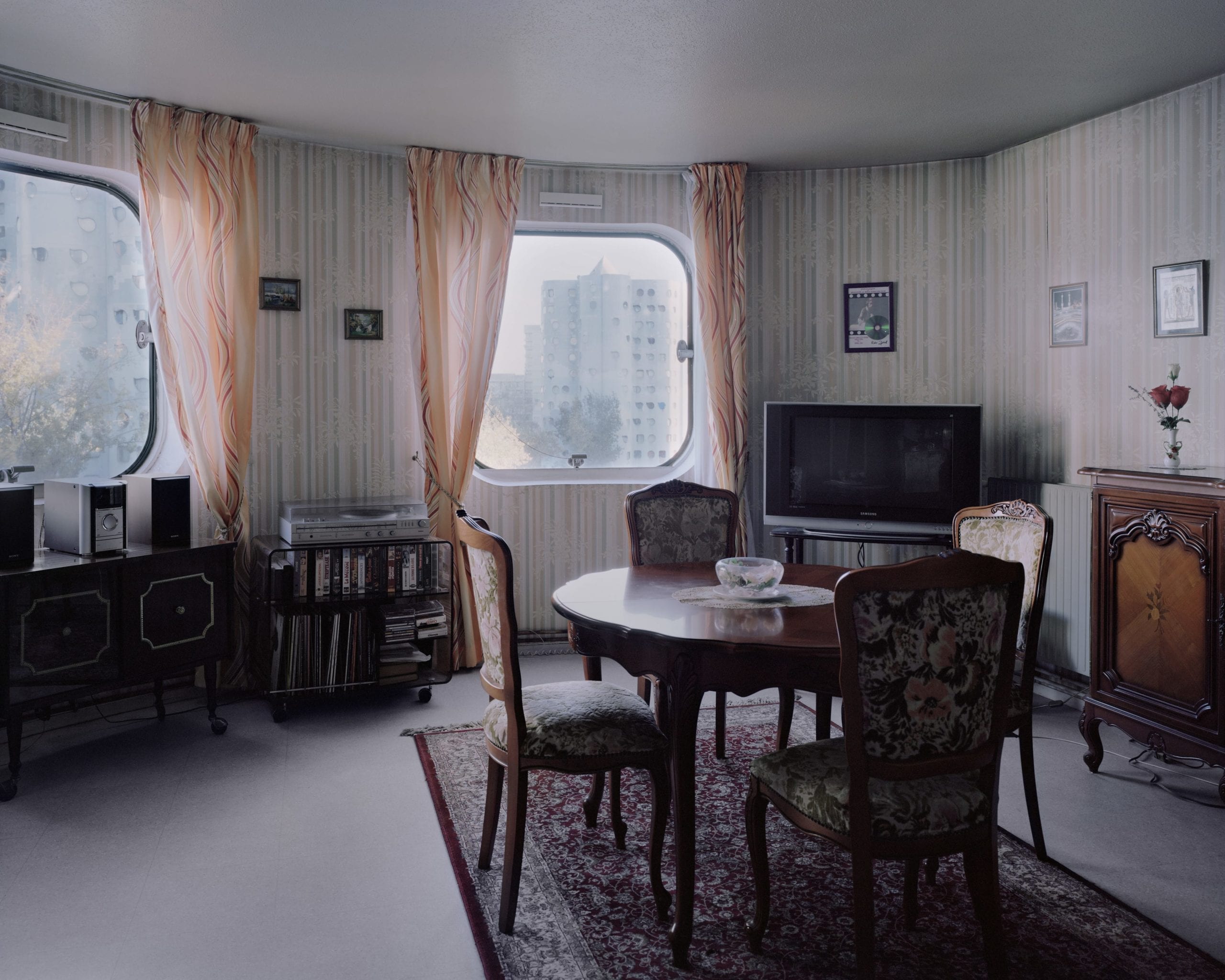
The focal point of many of the images is the circular window at one end of the capsule, which acts as a consistent reference point and a link between the unusual atmosphere in the tower and the city outside.

“These capsules were built on an assembly line and there’s a certain amount of repetition in terms of the layout and the configuration of the original furnishings. That set the stage for the fact that each of these rooms is occupied by different individuals and they have experienced different histories over the past 43 years.

The photographs of the capsules are full of these traces, clues from which the viewer can speculate about the person left unseen – cactuses and fishtanks, coat hangers and laptops, an empty glass bottle propping open a cupboard or a gaudy towel strung over an open door.
As Minami points out, architectural photography is often taken when a building first opens, creating “pristine” shots which dominate the public perception for decades. He wanted to take a different approach, celebrating the way Nakagin had changed – but also to look with a sympathetic eye, not the sweaty lust of a ruin pornographer.
